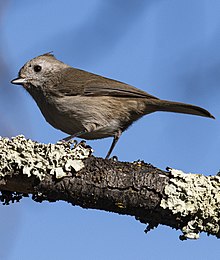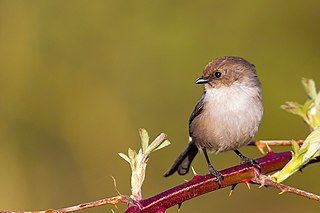
The American bushtit or simply bushtit is a social songbird belonging to the genus Psaltriparus. It is one of the smallest passerines in North America and it is the only species in the family Aegithalidae that is found in United States; the other seven species are found in Eurasia.
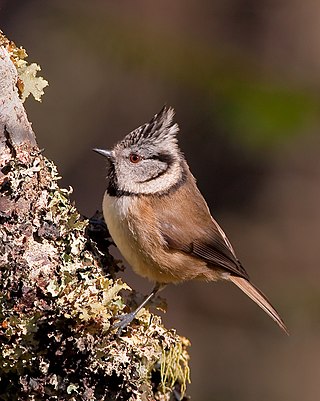
The tits, chickadees, and titmice constitute the Paridae, a large family of small passerine birds which occur mainly in the Northern Hemisphere and Africa. Most were formerly classified in the genus Parus.

The rusty blackbird is a medium-sized New World blackbird, closely related to grackles. It is a bird that prefers wet forested areas, breeding in the boreal forest and muskeg across northern Canada, and migrating southeast to the United States during winter.

The white-breasted nuthatch is a species of bird in the nuthatch family Sittidae. It is a medium-sized nuthatch, measuring approximately 15.5 cm (6.1 in) in length. Coloration varies somewhat along the species' range, but the upperparts are light blue-gray, with a black crown and nape in males, while females have a dark gray crown. The underparts are whitish, with a reddish tinge on the lower abdomen. Despite not being closely related, the white-breasted nuthatch and the white wagtail are very similar in plumage. The white-breasted nuthatch is a noisy bird. It has a nasal voice and often utters little cries or vocalizations, often composed of repetitions of small invariant whistles. In summer, it is an exclusively insectivorous bird, consuming a wide range of arthropods, but in winter its diet consists mainly of seeds. The nest is located in the cavity of a tree. The clutch consists of five to nine eggs, incubated for two weeks by the female, who is fed by the male. The two adults then feed the young until they fledge, and for a few weeks after that.
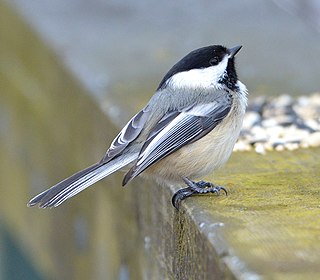
The black-capped chickadee is a small, nonmigratory, North American songbird that lives in deciduous and mixed forests. It is a passerine bird in the tit family, the Paridae. It is the state bird of Massachusetts and Maine in the United States, and the provincial bird of New Brunswick in Canada. It is well known for its ability to lower its body temperature during cold winter nights, its good spatial memory to relocate the caches where it stores food, and its boldness near humans.

The Carolina chickadee is a small passerine bird in the tit family Paridae.
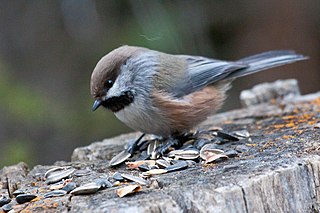
The boreal chickadee is a small passerine songbird in the tit family Paridae. It is found in the boreal forests of Canada and the northern United States and remains within this range all year. This bird is known for its high pitched trill patterns used in communication with other birds and food storage habits in preparation for winter months.

The tufted titmouse is a small songbird from North America, a species in the tit and chickadee family (Paridae). The black-crested titmouse, found from central and southern Texas southward, was included as a subspecies but now is considered a separate species, Baeolophus atricristatus.

The black-throated gray warbler or black-throated grey warbler is a passerine bird of the New World warbler family Parulidae. It is 13 cm (5.1 in) long and has gray and white plumage with black markings. The male has the bold black throat of its name, and black stripes on its head, as well as black streaks on its flanks; the female is a paler version of the male, with a white throat and less distinct black markings on the flanks and wings. It breeds in western North America from British Columbia to New Mexico, and winters in Mexico and the southwestern United States. The habitats it prefers are coniferous and mixed forests and scrubland, especially those with pinyon pines, junipers, sagebrush, and oaks. Its nest is an open cup of plant fibers lined with feathers, built a few metres from the ground in the branches of a tree or shrub. Three to five eggs are laid, and young are fed by both parents. Common in its breeding range, it does not seem to be seriously threatened by human activities, unlike many migratory warblers.

The pygmy nuthatch is a tiny songbird, about 10 cm (4 in) long and about 10 grams in weight.

The mountain chickadee is a small songbird, a passerine bird in the tit family Paridae.
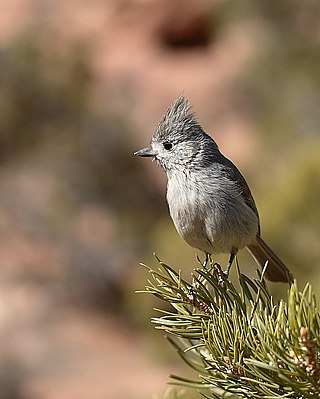
The juniper titmouse is a passerine bird in the tit family Paridae. The American Ornithologists' Union split the plain titmouse into the oak titmouse and the juniper titmouse in 1996, due to distinct differences in song, preferred habitat, and genetic makeup.
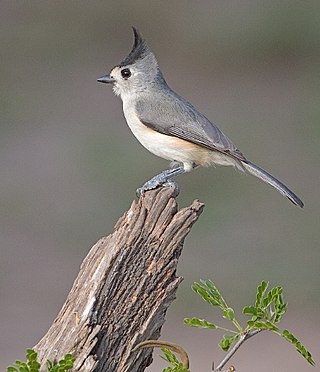
The black-crested titmouse or Mexican titmouse, is a passerine bird in the tit family Paridae. Once considered a subspecies of the tufted titmouse, it was recognized as a separate species in 2002. It is native to southern Texas, Oklahoma, and east-central Mexico. Vagrants have been seen as far north and east as St. Louis, Missouri.

The bridled titmouse is a small songbird, a passerine bird in the tit family Paridae.

The austral parakeet, austral conure, or emerald parakeet is a species of bird in subfamily Arinae of the family Psittacidae, the African and New World parrots. It is found in Argentina, Chile, and possibly the Falkland Islands.

Baeolophus is a genus of birds in the family Paridae, commonly called Tits. Its members are known as titmouses or titmice. All the species are native to North America. In the past, most authorities retained Baeolophus as a subgenus within the genus Parus, but treatment as a distinct genus, initiated by the American Ornithological Society, is now widely accepted.
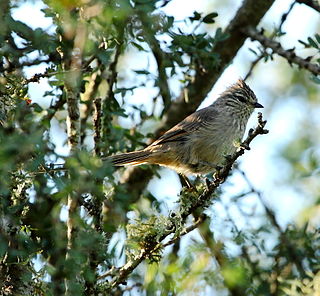
The tufted tit-spinetail is a species of bird in the Furnariinae subfamily of the ovenbird family Furnariidae. It is found in Argentina, Brazil, Uruguay, and possibly Paraguay.

Archbold's newtonia is a species of bird in the family Vangidae. It is endemic to Madagascar. Its natural habitats are subtropical or tropical dry forests and subtropical or tropical dry shrubland. The birds have a greyish brown back and tail, with a rufous forecrown and a buffy white belly, throat, and undertail coverts. They have a conspicuous rufous eye-ring, accompanied with a black bill and pale yellow eyes. The species is sexually monomorphic, and there is no major difference between the sexes. There is no breeding plumage for the males.

The guttulate foliage-gleaner is a species of bird in the Furnariinae subfamily of the ovenbird family Furnariidae. It is endemic to Venezuela.

The pinyon jay is a species of jay, and is the only member of the genus Gymnorhinus. Native to Western North America, the species ranges from central Oregon to northern Baja California, and eastward as far as western Oklahoma, though wanderers are often sighted beyond this range. It is typically found within foothills, especially where pinyon pines occur.


